The following is a summary of global temperature conditions in Berkeley Earth’s analysis of April 2023.
- Globally, April 2023 was cooler than March and nominally for the 4th warmest April since records began in 1850.
- In the oceans, April 2023 set a new record, becoming the warmest anomaly of any month on record.
- On land, April 2023 was the 11th warmest April since 1850.
- Warm conditions occurred in parts of Asia, parts of North America, Antarctica, Africa, and various oceanic areas.
- Unusually cool conditions were present in Alaska, India, parts of central Asia, and central Canada.
- The Pacific appears to be transitioning towards El Niño, which is considered likely within a few months.
- 2023 is now more slightly likely than not to become a new record warm year (56% chance).
Global Summary
Globally, April 2023 has been nominally the fourth warmest April since records began in 1850. This April was warmer than the previous two years, but still cooler than April in 2020 and 2016. April 2023 was also slightly cooler than April 2019, though given the uncertainties these years are effectively tied and either could reasonably be described as the third warmest April. April 2023 was distinctly warmer than any April prior to 2016.
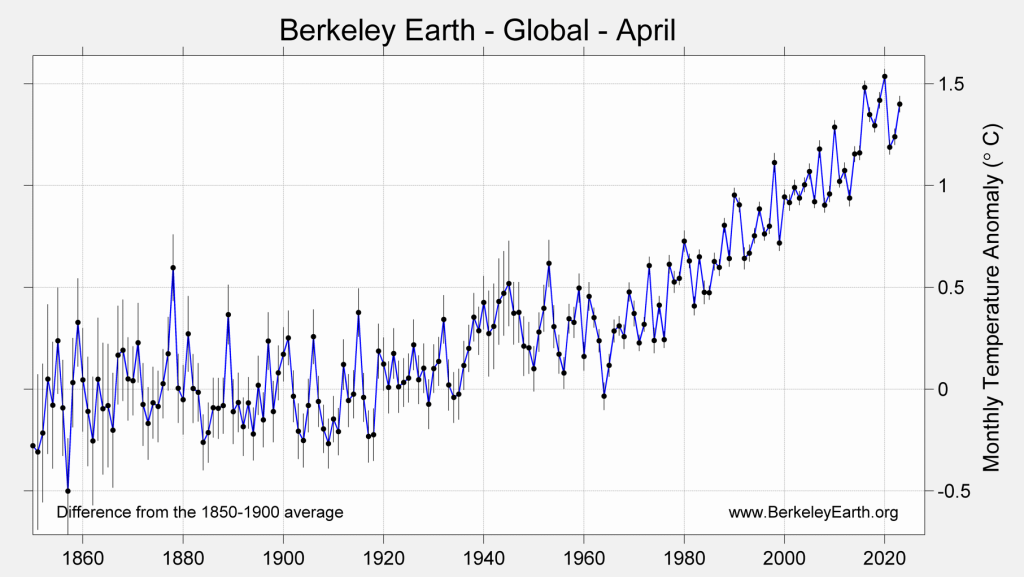
The global mean temperature in April 2023 was 1.40 ± 0.06 °C (2.52 ± 0.11 °F) above the 1850 to 1900 average, which is frequently used as a benchmark for the preindustrial period. The global mean temperature anomaly in April 2023 exhibited a significant decrease relative to March 2023, falling ~0.15 °C (0.27 °F). This change was driven by sharp month-to-month cooling on land despite moderate continued warming in the oceans.
Temperatures in April were close to the long-term trend line, and recent fluctuations remain consistent with natural variability within the ongoing pattern of global warming.
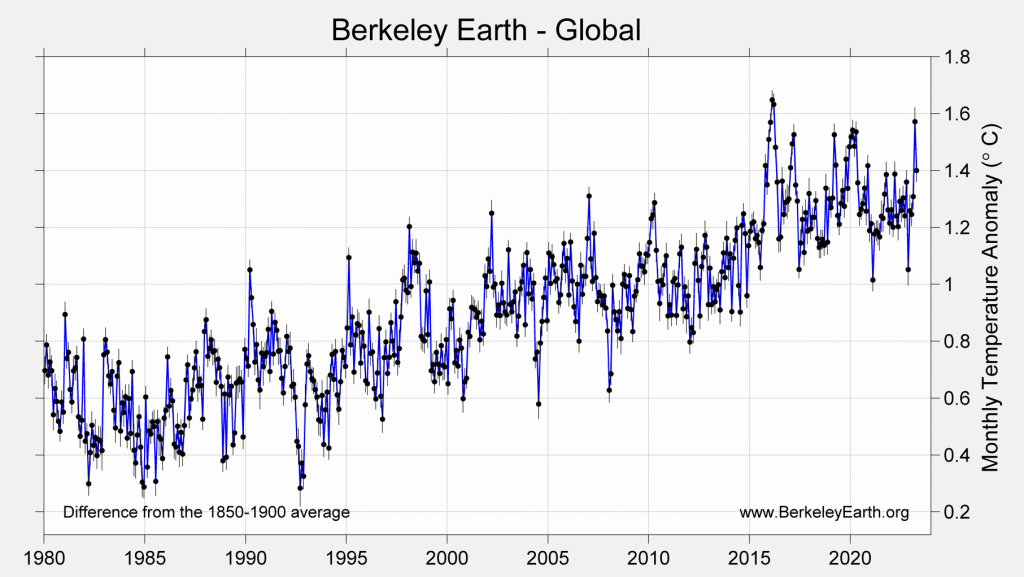
Spatial Variation
April 2023 continues the ongoing pattern of widespread warmth, though with a few exceptions. Particularly warm conditions were present in parts of Asia, parts of North America, Antarctica, Africa, and various oceanic areas.
Particularly cool conditions were present in Alaska, India, parts of central Asia, and central Canada.
We estimate that 3.4% of the Earth’s surface experienced their locally warmest April average, and 81% of the Earth’s surface was significantly warm when compared to their local average during the period 1951 to 1980. In addition, no part of the Earth’s surface had their locally coldest April.
The Equatorial Pacific appears to have begun a transition towards El Niño conditions. Above average temperatures are present in much of the Pacific, with record warm temperatures developing on the coast of South America. A full transition to El Niño is considered likely within the next several months.
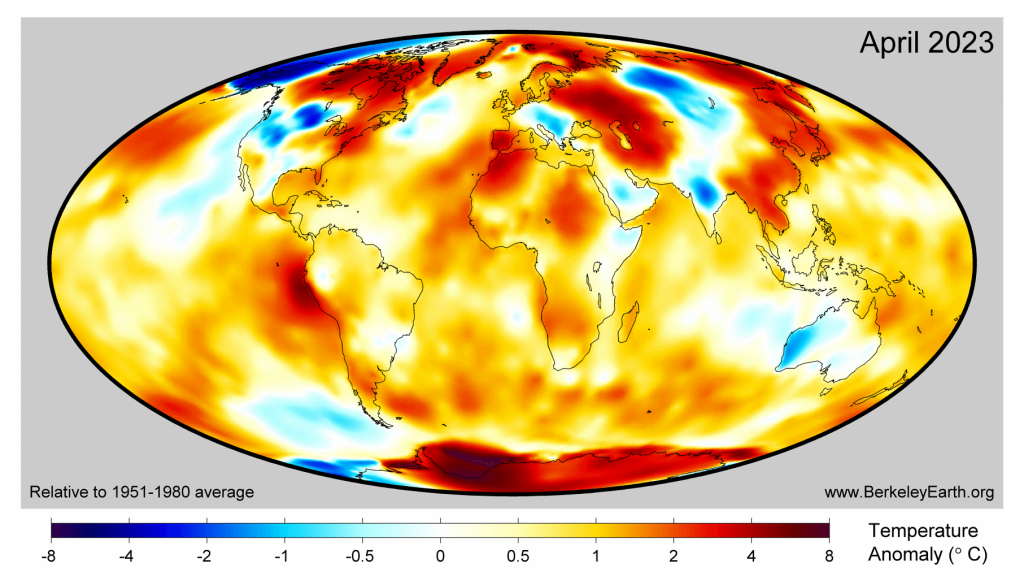
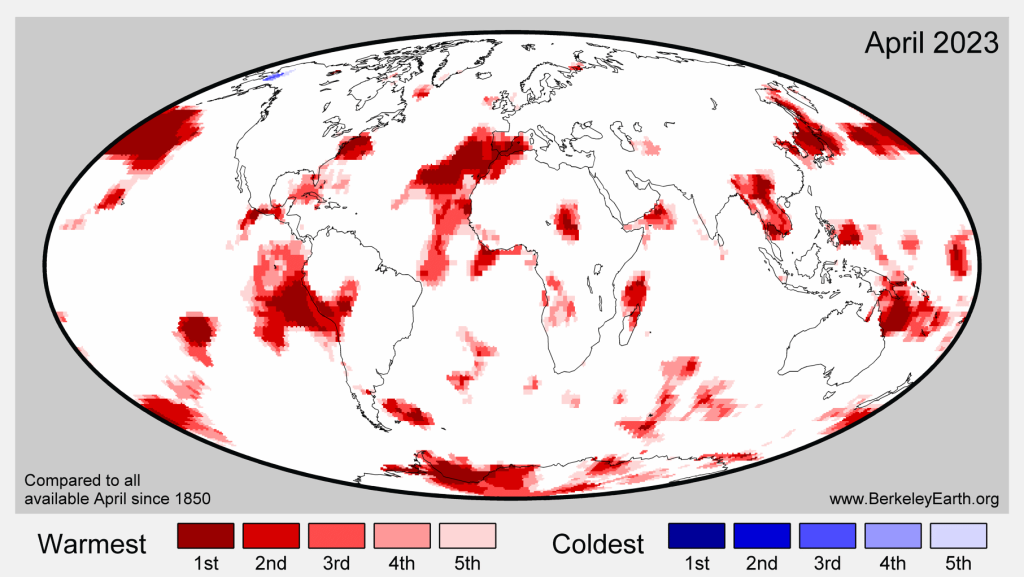
Over land regions, 2023 was the 11th warmest April ever observed, and cooled considerably following the 2nd warmest March. The land average was 1.74 ± 0.12 °C (3.14 ± 0.21 °F) above the 1850 to 1900 average. This cooling relative to March is due largely to cooler temperatures over Asia.
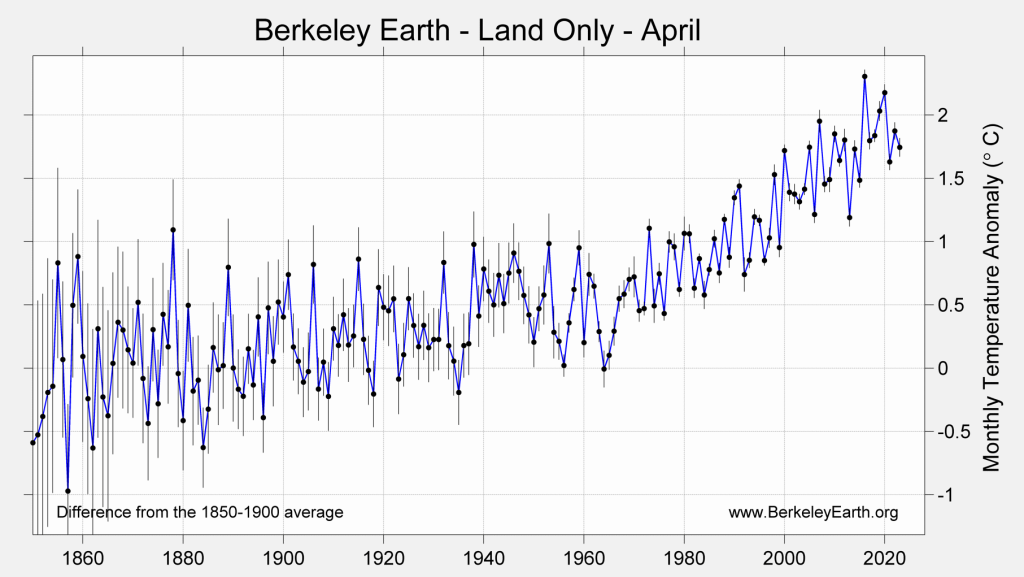
April 2023 was the warmest April in the oceans, recorded as 1.07 ± 0.07 °C (1.93 ± 0.13 °F) above the 1850 to 1900 average, and beating the previous record set in 2020.
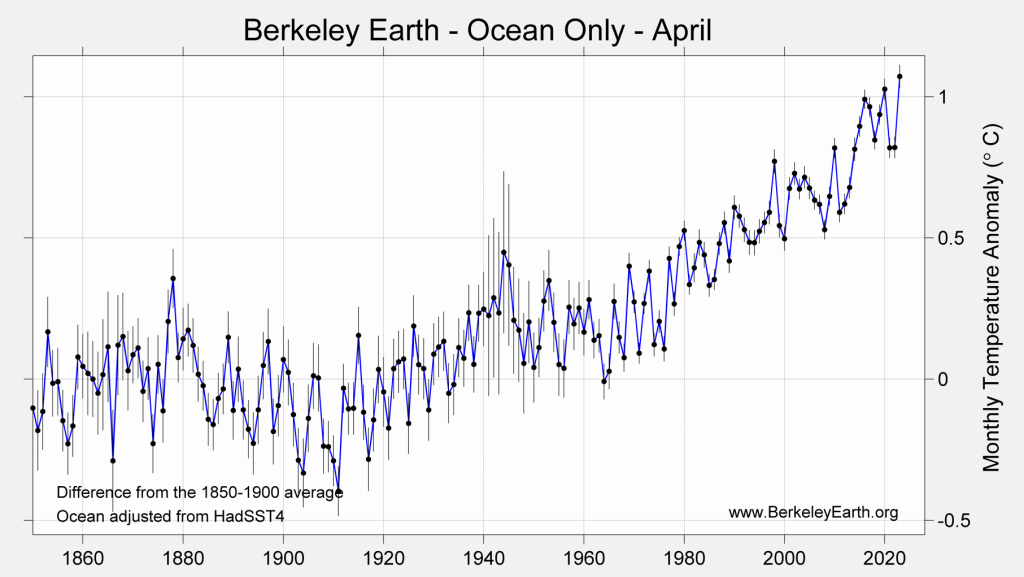
In addition to being the warmest April, April 2023 was also the largest positive anomaly recorded in the oceans of any month since observations began, beating the previous record set during the 2016 El Niño event, and expanding on the abrupt upwards shift witnessed in March.

El Niño Outlook
April 2023 exhibits a neutral condition in the Pacific Ocean with an ongoing trend towards El Niño. The current CPC/IRI analysis suggests that neutral conditions will persist for a few months, followed by a >80% chance of El Niño conditions before the end of Northern Hemisphere summer. Models currently disagree on the intensity of the possible El Niño, with some models predicting a very strong event, while others are more mild or moderate. The developing warm pool in the Pacific will likely give us a clearer idea of what to expect during the next month or two.
If El Niño develops, it is likely to moderately boost global average temperatures during the rest of 2023 and into 2024. Due to the lag between the development of El Niño and its full impact being felt on global temperatures, it is likely that any El Niño will have a greater impact on 2024 global temperatures than it does on 2023.
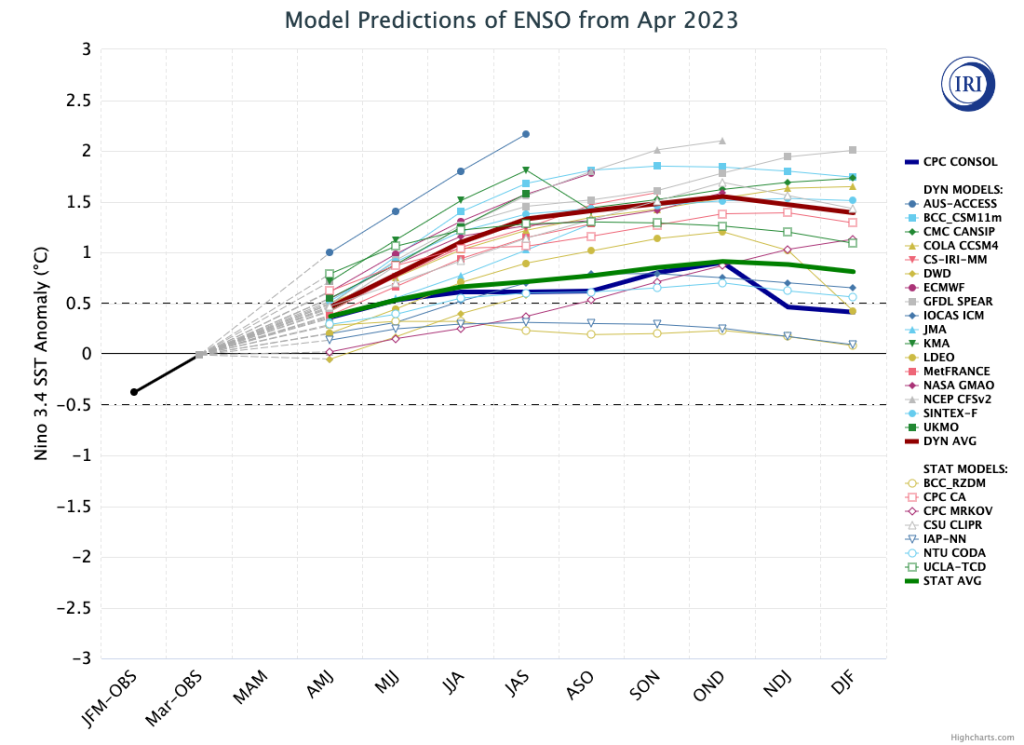
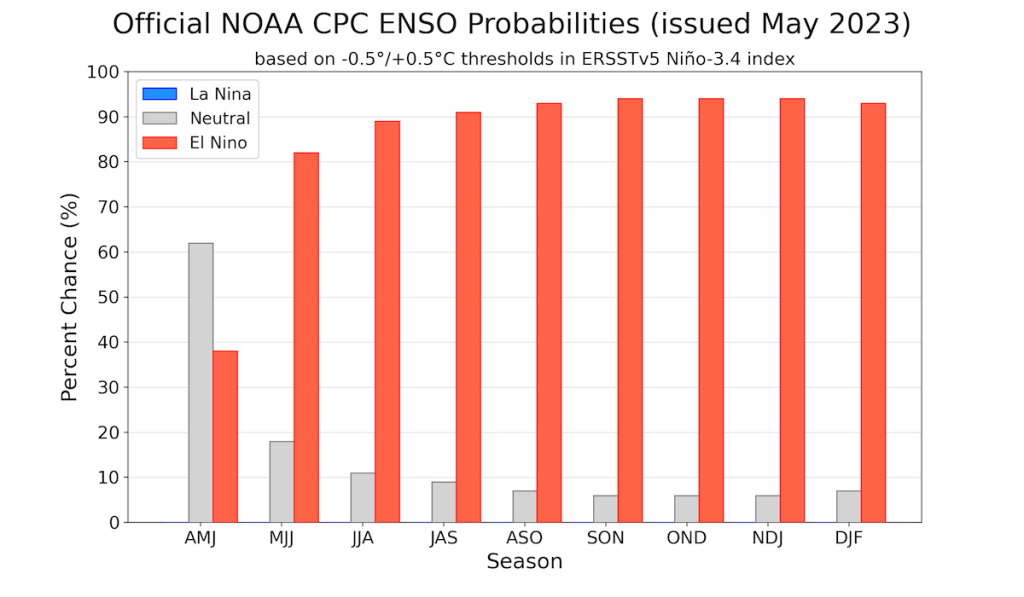
Year to Date
This year began with a January that was similar to January in 2021 and 2022. However, with the end of La Niña, temperatures have diverged markedly in February, March, and April, and are now considerably warmer than in 2021 or 2022.

The most significant spatial features of year-to-date temperatures are the shift towards El Niño, warmth across much of the northern mid-latitudes, cooling in the Western USA, and several ocean hotspots. Year-to-date, 4.7% of the Earth’s surface has experienced average temperatures that are a local record high. In addition, none of the Earth’s surface has been record cold year-to-date.

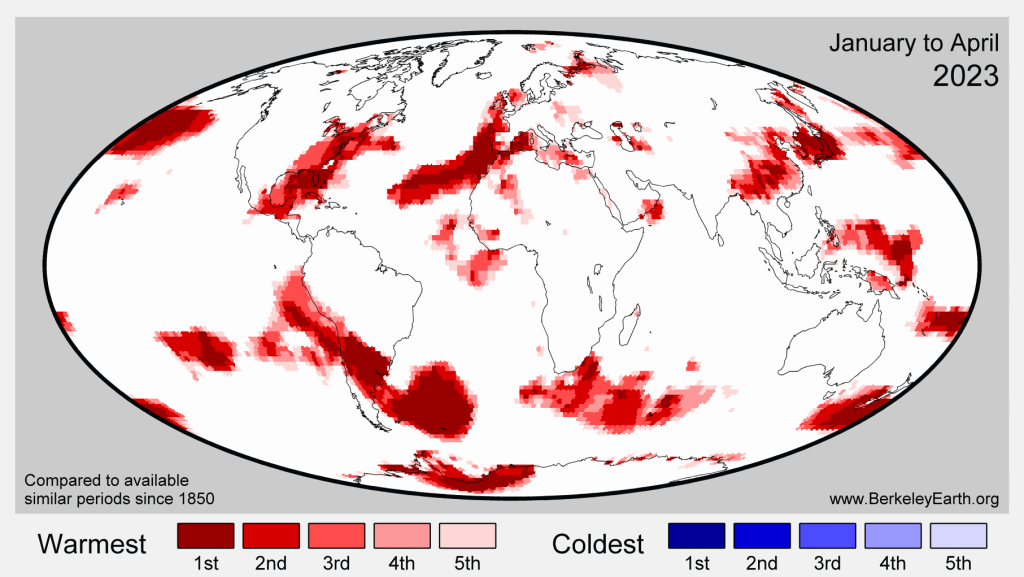
Rest of 2023
2023 is on pace to be one of the warmest years yet observed. The surprisingly strong warming in March and April 2023, combined with an increased likelihood of a strong El Niño event, have increased the forecast for the rest of 2023. The statistical approach that we use, looking at conditions in recent months, now believes that 2023 is more likely than not to become the warmest year on record (56% chance). This is an upward shift from last month’s report, when the likelihood of a record warm year was estimated at 38%. If 2023 does not become the warmest year on record, then it would likely finish 2nd, 3rd, or 4th (combined chance 40%), with only a slight chance of a final ranking lower than 4th. The final ranking will depend strongly on how El Niño develops during the rest of the year.
Even in the presence of a strong El Niño, 2023 would still be unlikely to exceed 1.5 °C (2.7 °F) above the preindustrial benchmark.
Absent an enormous volcanic eruption, or other exceptional intervening event, it is near certain that 2023 will become one of the warmest years on record.
Because of the lag between the development of an El Niño and its maximum impact on global temperatures, an El Niño that develops during 2023 is likely to have an even larger warming effect on global mean temperature in 2024 than 2023.
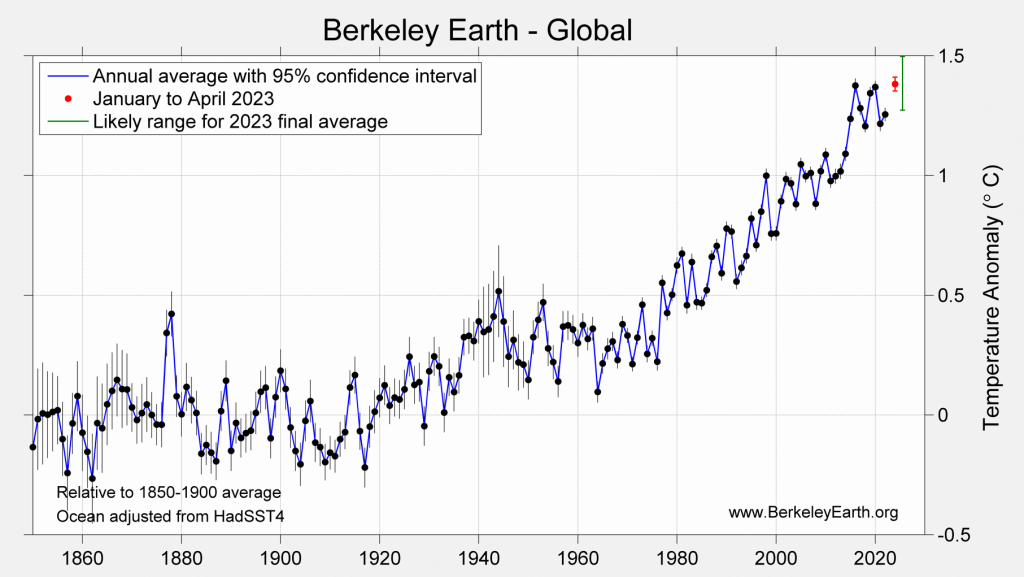
Likelihood of final 2023 ranking:
- 1st place (56 %)
- 2nd or 3rd place (20 %)
- 4th place (20 %)
- 5th place (2 %)
- 6th or 7th place (1 %)
- Top 7 overall (> 99 %)

